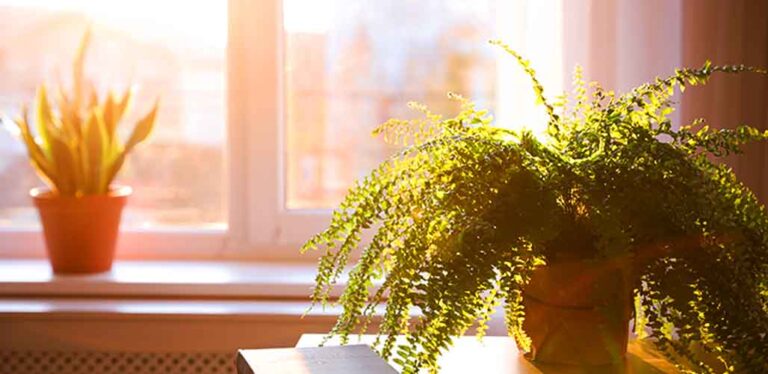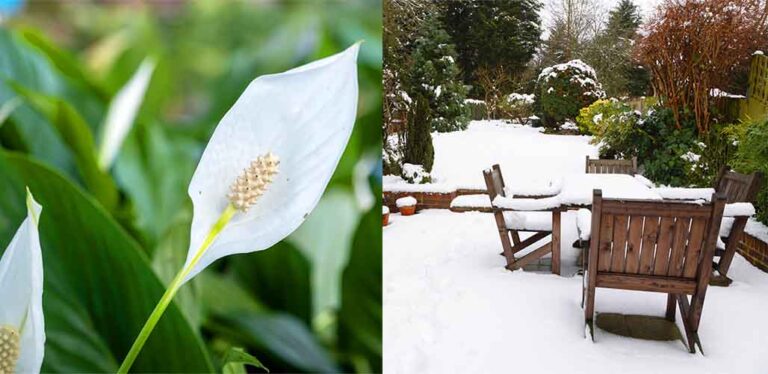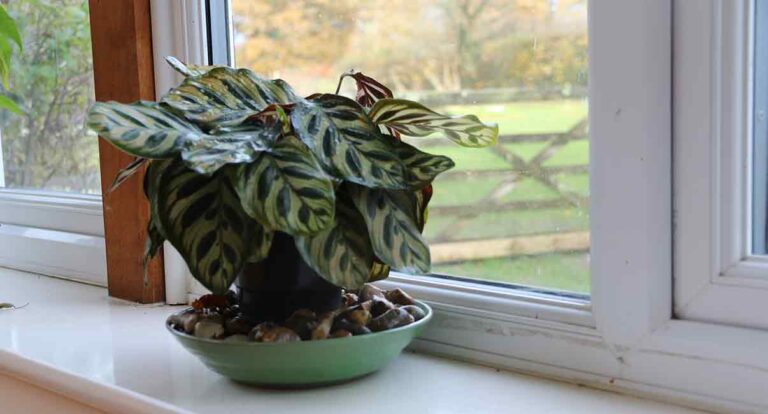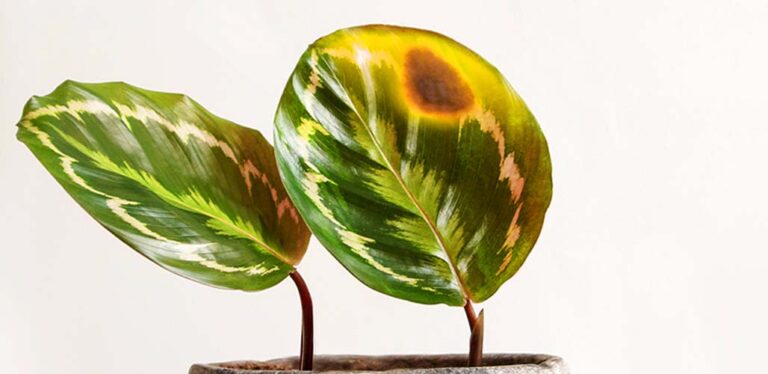How To Rescue Wilting Pothos
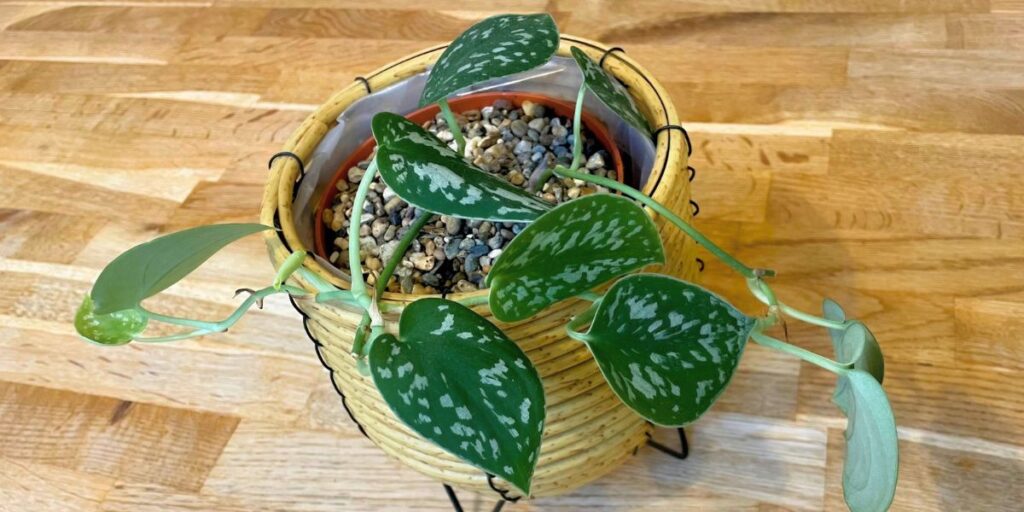
Pothos is often described as being ‘beginner-friendly’, ‘immune to neglect’, and even ‘impossible to kill’. So wilting pothos, when it happens, can feel like a rather damning result of our care. Was life on our windowsill really that bad? Luckily, most pothos discovered drooping sadly in their pots can be recovered. It’s not often the case that wilting means they’ve passed the point of no return. So here are the things that can cause pothos to wilt, and how to perk your plants back up again.
- Perfect conditions for pothos
- Wilt brought on by underwatering
- Overwatering-induced wilting
- Diseases that cause wilting pothos
Perfect conditions for pothos
Also known as devil’s ivy and Ceylon creeper, pothos has taken the houseplant scene by storm in recent years. Despite the sheer variety of different colors and leaf patterns available in stores and online, they all belong to one of two species:
- Satin pothos (Scindapsus pictus), with its silver-speckled, matte dark green leaves.
- Golden pothos (Epipremnum aureum), which includes all the other varieties – neon pothos, N’joy pothos, and all their marbled, striped and variegated cousins too.
Both species are originally native to south and southeast Asia, where they’ve adapted to thrive in rainforests, climbing up larger plants for support. As a houseplant, they can either be left to dangle from a shelf or pot hanger, or trained up a moss pole or wire frame.
Pothos like dappled-to-moderate shade, which mimics the effect of light diffused through a rainforest canopy overhead. And they also like to dry out a bit between watering. In the rainforest, rain water in the ground is quickly taken up by larger plants around them, so they’re used to drying out between tropical rain showers. As a rule of thumb, water your pothos only when the top two or three inches of soil in their pot is dry.
Fact: ‘Pothos’ and ‘pothoses’ are both grammatically acceptable plurals of pothos.
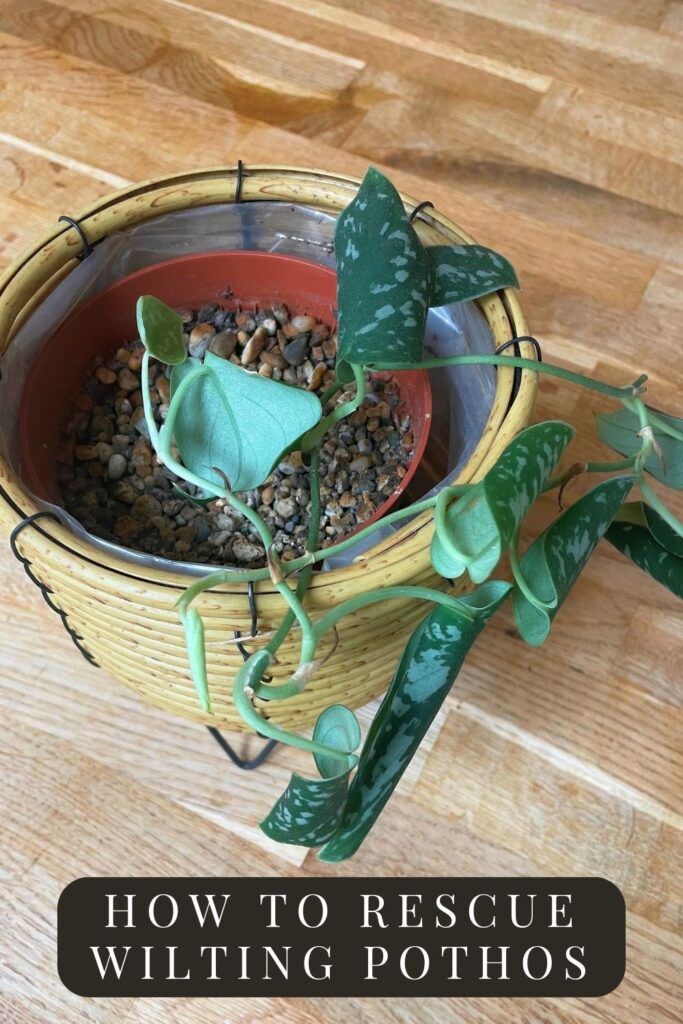
Wilting brought on by underwatering
When house plants start to droop, the first place our thoughts often go to is ‘ah, they must need a drink’. And it’s a possibility! A thoroughly dried out pothos’ stems will start to hang more limply, and the leaves may get less plump and sturdy, or start to curl up. Here’s an easy way to find out if your pothos needs watering:
Poke a wooden chopstick into the soil, all the way to the bottom of the pot.
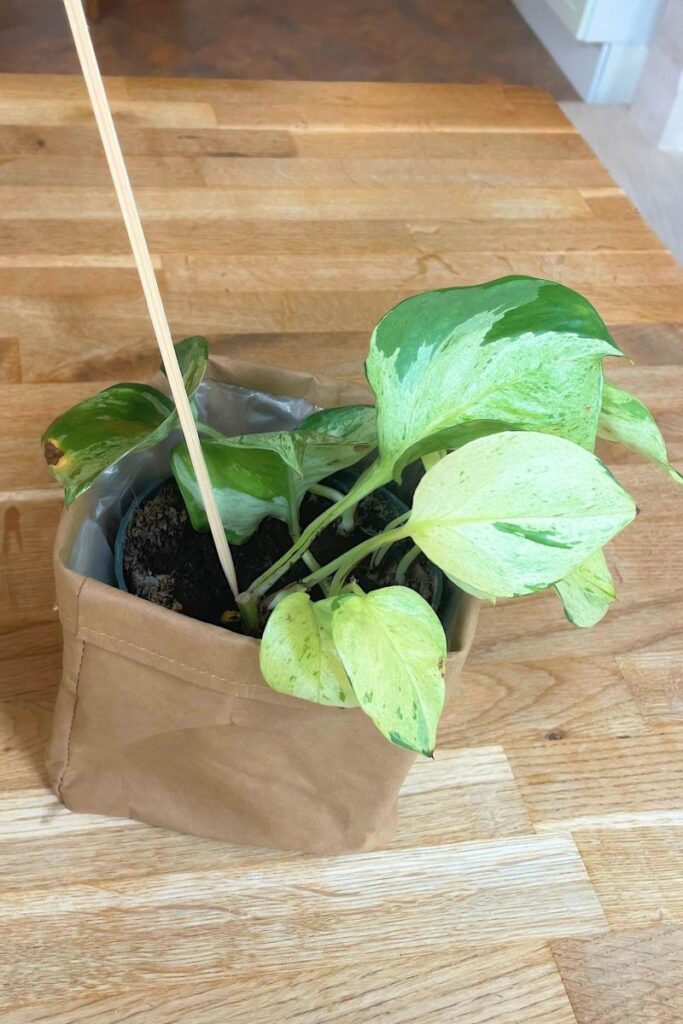
You’ll probably already have an idea from how the chopstick moved through the compost whether it’s totally dried out or still contains some moisture. Position your thumb at the surface of the soil, before you lift the chopstick back out.
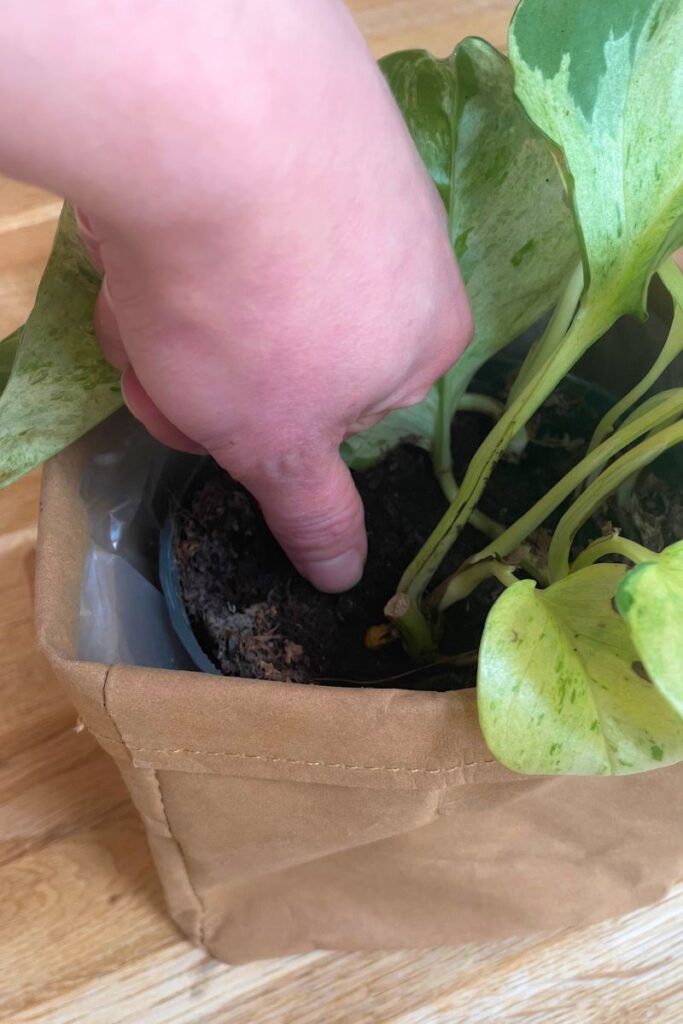
Remove the chopstick from the pot. If the soil is damp, it will cling to the chopstick, and you’ll feel the water in it if you rub it between your fingers. This ‘Happy Leaf’ golden pothos was watered around a week ago, and you can see that only the top half-inch of compost closest to my thumb is dry. So it doesn’t need watering again yet.
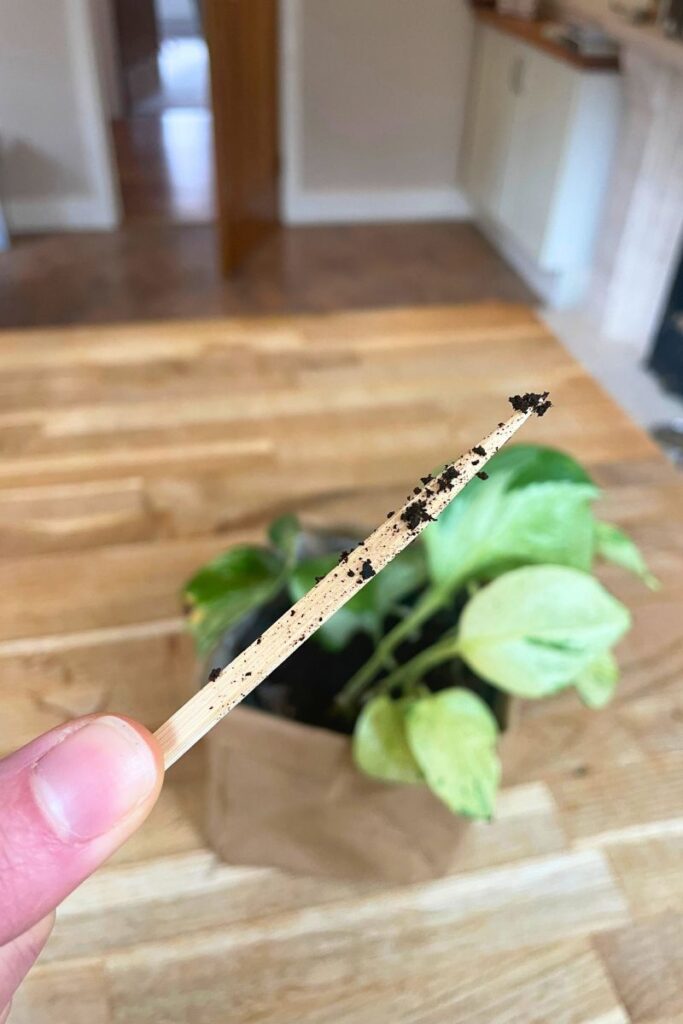
On the other hand, the compost around this satin pothos is completely dry, even though the leaves haven’t started wilting yet. The compost felt crunchy when I inserted the chopstick, and it came out almost completely clean.
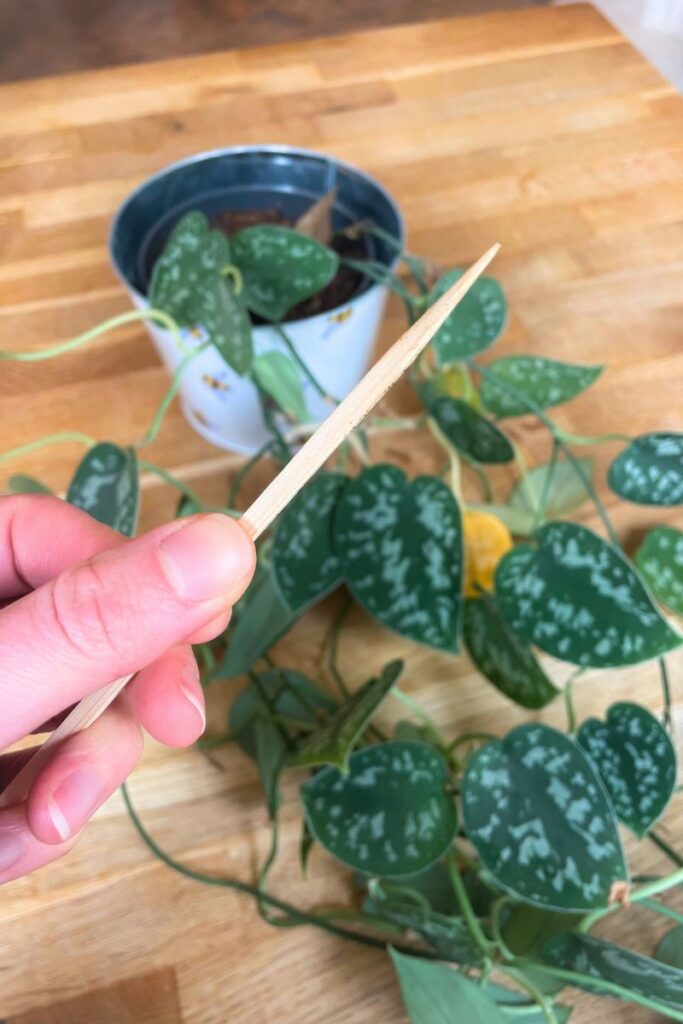
So it’s time for a drink – in this case the dregs of a cold cup of tea. You’ll never see me waste the last of an herbal tea by pouring it down the sink!
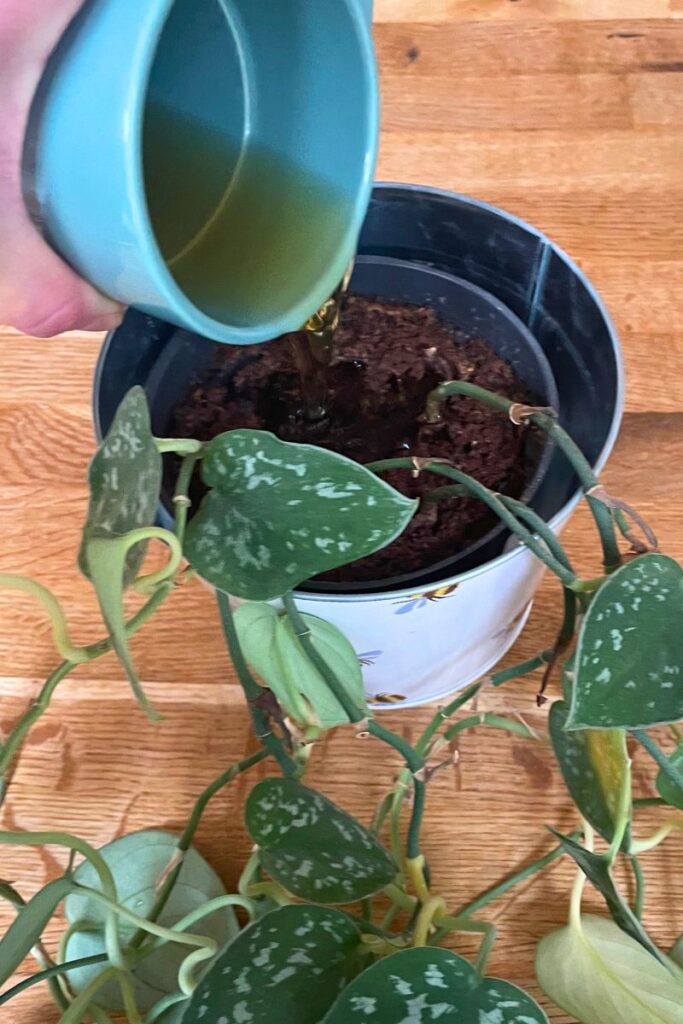
Wilting pothos cuttings
These satin pothos cuttings I propagated several weeks ago are not only sitting in dry soil now, they’re starting to curl up.
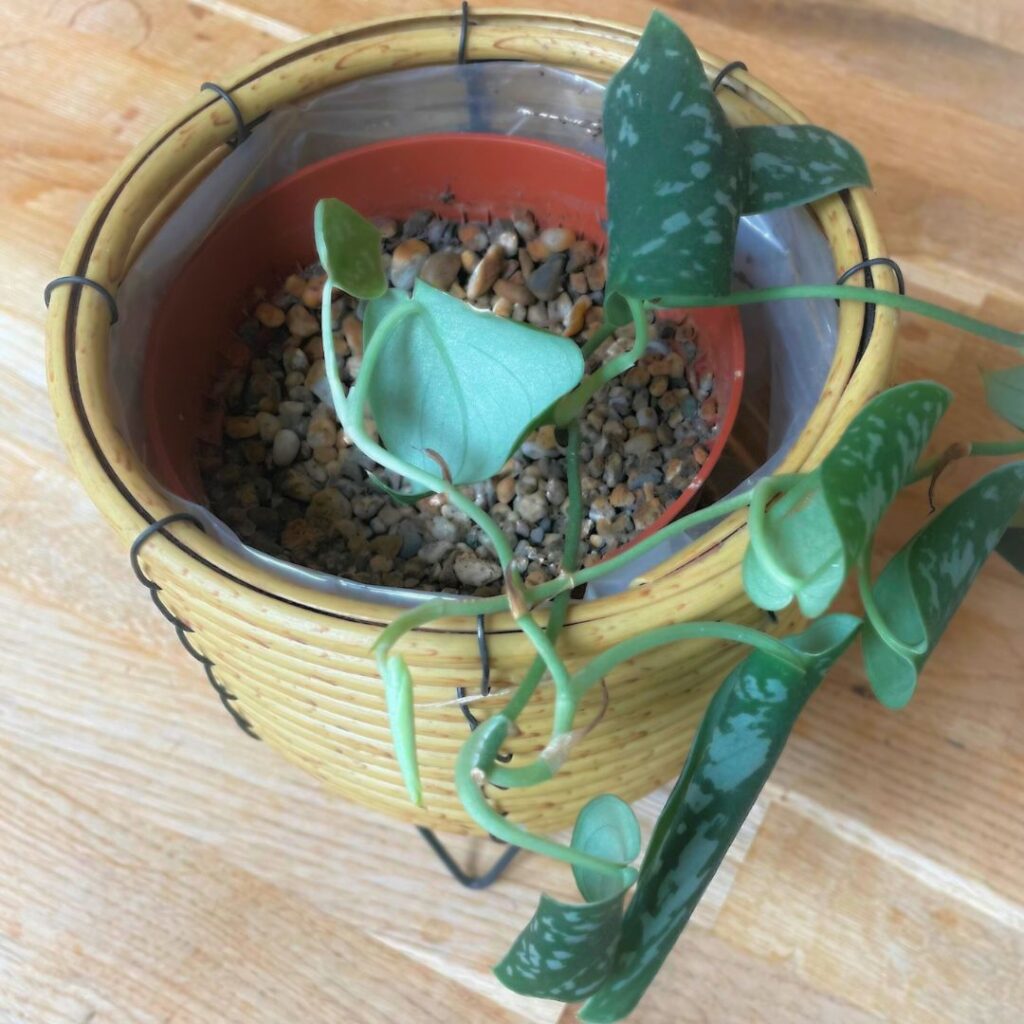
Curling leaves are a reliable sign that your pothos needs watering, and it happens long before the point of no return for your plant. So a drink at this stage invariably revives them. It looks like the soil level has really sunk since I potted these cuttings up too, so I’ll give them a drink first, and top up the compost once they’ve revived a bit.
And here they are two days later. I watered them, and several hours later removed the grit from on top of the soil, added more bagged houseplant compost, replaced the grit and lightly watered in the new soil too. As you can see, 24 hours after that the leaves are fully unfurled again.

Wilting pothos caused by overwatering
Wilting leaves make us think of drying out, but in fact over watering is probably a more common problem for pothos. Especially in winter, when they stop growing, and therefore don’t need water to support new growth. When pothos’ roots are left standing in waterlogged soil, they can start to rot. This happens because plants’ roots need oxygen. Water fills the air pockets in the soil, and once the oxygen dissolved in the water is used up, the roots suffocate and die. Since they’re no longer supporting the foliage when that happens, the leaves start to turn yellow and wilt too.
Signs your pothos is overwatered are:
- The compost looks obviously wet, and there’s water standing in the drip tray or pot cover.
- The stems turning black and slimy, or rotting at the base.
- Its leaves turning yellow.
- If you lift the root ball out of the plant pot, it might release an unpleasant rotting-egg smell.
Rescuing a wilted, over-watered pothos
To find out if your pothos can be saved, tip it out of its pot and take a look at the roots. Healthy roots are white or beige, and feel tough. There’s rarely anything to lose by trying to rescue an overwatered pothos that still has some healthy roots, so at least give it a go!
- Take it out of its pot, and shake the wet soil into the trash.
- Wash the roots thoroughly under a faucet to remove the rest of the compost.
- Cut away any dead, slimy, damaged and rotten roots.
- Either scrub the original pot with hot water and dish soap, or treat your pothos to a new one.
- Repot you pothos in fresh compost.
- Cut back its stems by ⅓ to ⅔ of their length, depending on how much of the root ball you had to remove. Reducing the foliage reduces the strain on the remaining roots while they recover from being repotted.
- Leave your pothos alone to recover. It might take several months for your plant to start putting on new growth, but as long as it isn’t actively dying, just let it be.
Diseases that cause wilting pothos
Pothos are generally pretty disease-free, but they do sometimes suffer from:
- Phytophthora root rot, a fungus-like infection
- Bacterial wilt disease
- Rhizoctonia blight, a fungal infection
- Southern blight, another fungal infection
Wilting leaves are a common symptom of all these diseases. You can tell them apart from under- and over-watering because:
- The leaves turn black or brown, and quickly go completely limp. They stick to the surrounding leaves and stems, and if you rub them between your fingers they break up easily.
- The leaves and stems wilt at the same time (in cases of overwatering, the stems tend to rot before the leaves wilt, although they will probably be turning yellow).
Prevention is the best cure for pothos diseases. Plant your healthy new pothos in fresh compost, and allow the top two inches of compost to dry out between waterings. Soggy soil is an ideal environment for pathogens to multiply in, and section of roots that have suffocated and died in stagnant water are the perfect spot for pathogens like fungi and bacteria to invade a plant through.
Unfortunately, diseased plants are best destroyed and replaced. If your pothos is large, and parts of it appear uninfected, you can try taking cuttings from the healthy material to replace your plant. Keep your cuttings quarantined from the rest of your houseplants though, until you’re certain they’re disease-free!
Summary
Wilting rarely means the end of the line for pothos. When pothos leaves curl up, its a sign that they need a drink. Letting your pothos dry out a little between watering – even to the point that they wilt ever so slightly – is not a problem. They are adapted to survive short periods of drought – and my experience is that they handle it like champs. If the wilting leaves are black or brown and disintegrating though, it’s a sign of disease. Quarantine your sick pothos from the rest of your houseplants, and take healthy cuttings if you can before disposing of the rest of the plant.

